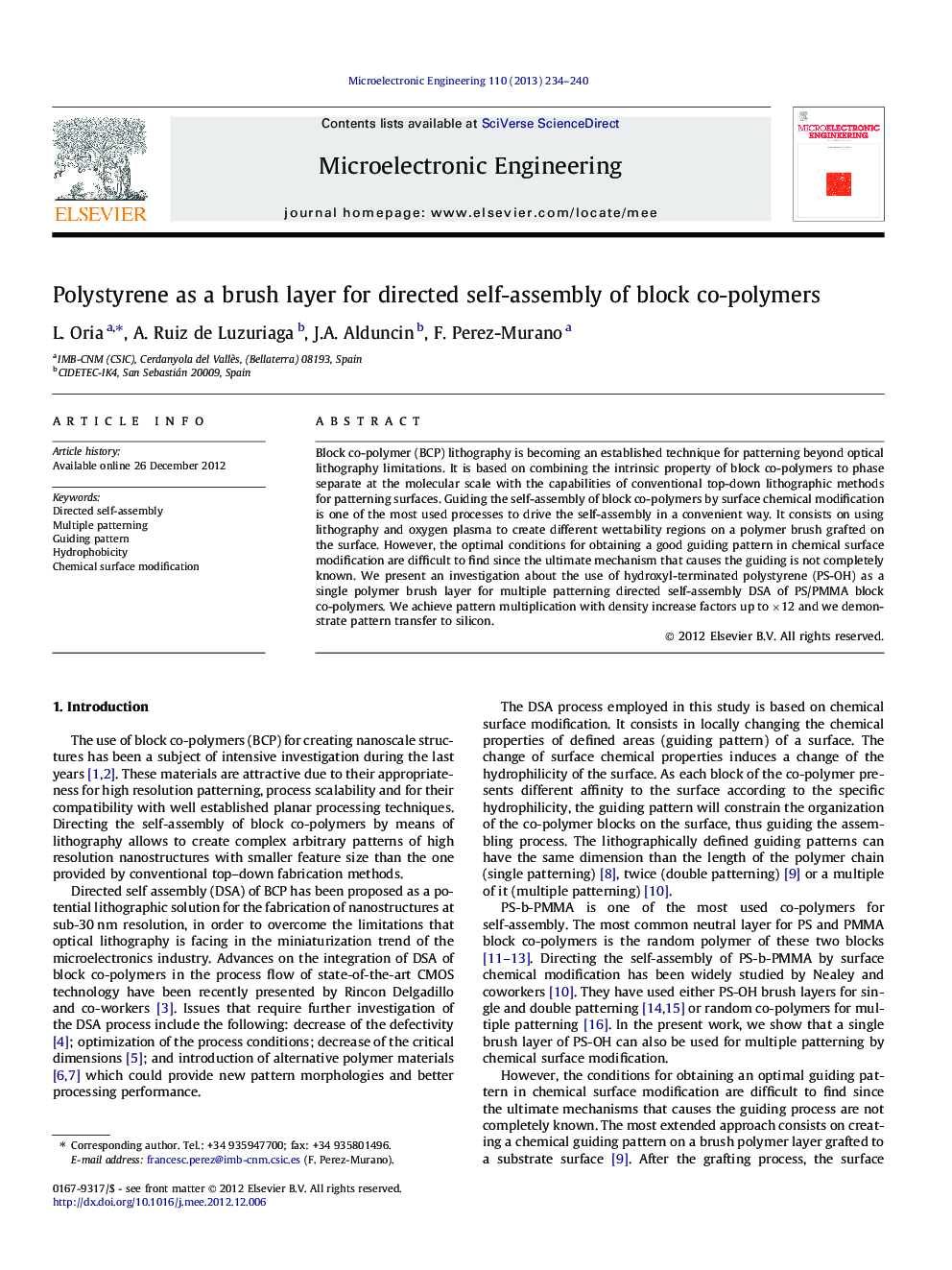| کد مقاله | کد نشریه | سال انتشار | مقاله انگلیسی | نسخه تمام متن |
|---|---|---|---|---|
| 544268 | 1450371 | 2013 | 7 صفحه PDF | دانلود رایگان |

Block co-polymer (BCP) lithography is becoming an established technique for patterning beyond optical lithography limitations. It is based on combining the intrinsic property of block co-polymers to phase separate at the molecular scale with the capabilities of conventional top-down lithographic methods for patterning surfaces. Guiding the self-assembly of block co-polymers by surface chemical modification is one of the most used processes to drive the self-assembly in a convenient way. It consists on using lithography and oxygen plasma to create different wettability regions on a polymer brush grafted on the surface. However, the optimal conditions for obtaining a good guiding pattern in chemical surface modification are difficult to find since the ultimate mechanism that causes the guiding is not completely known. We present an investigation about the use of hydroxyl-terminated polystyrene (PS-OH) as a single polymer brush layer for multiple patterning directed self-assembly DSA of PS/PMMA block co-polymers. We achieve pattern multiplication with density increase factors up to ×12 and we demonstrate pattern transfer to silicon.
Figure optionsDownload as PowerPoint slideHighlights
► PS-OH is a suitable brush polymer to guide the self-assembly of PS-b-PMMA.
► Multiple patterning DSA allows obtaining large density multiplication factors.
► PS-b-PMMA assembled patterns are suitable for pattern transfer using ALD and RIE.
► Alignment of PS-b-PMMA is favored by the topography induced by the chemical pattern.
Journal: Microelectronic Engineering - Volume 110, October 2013, Pages 234–240